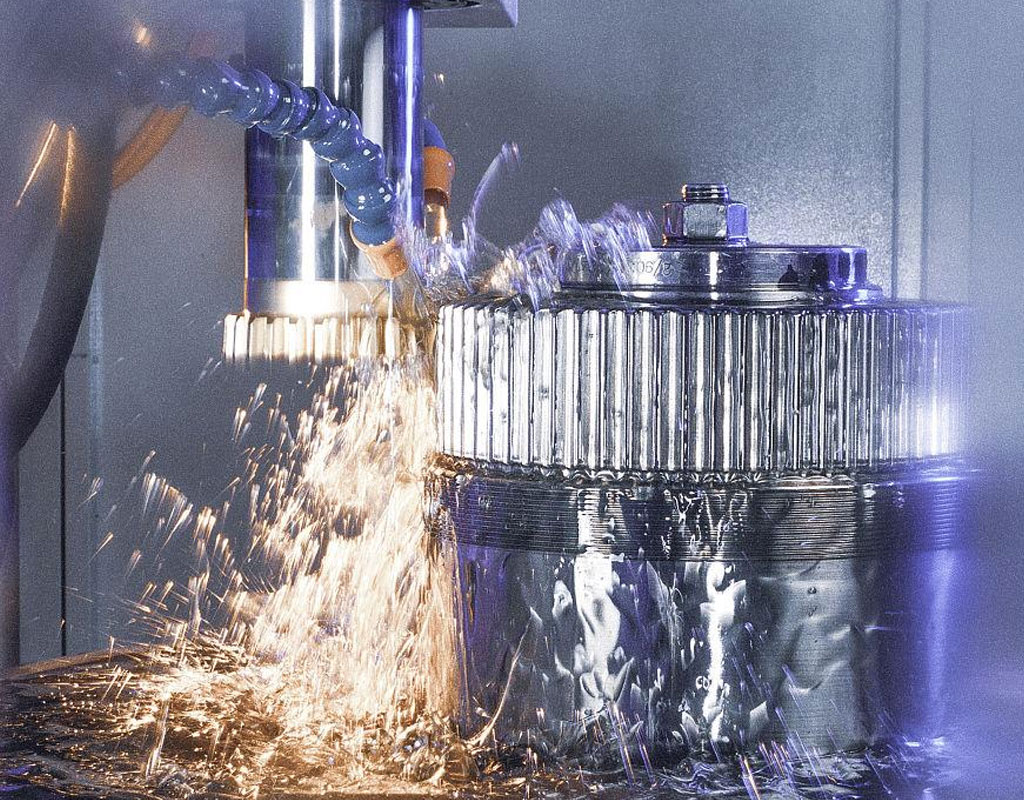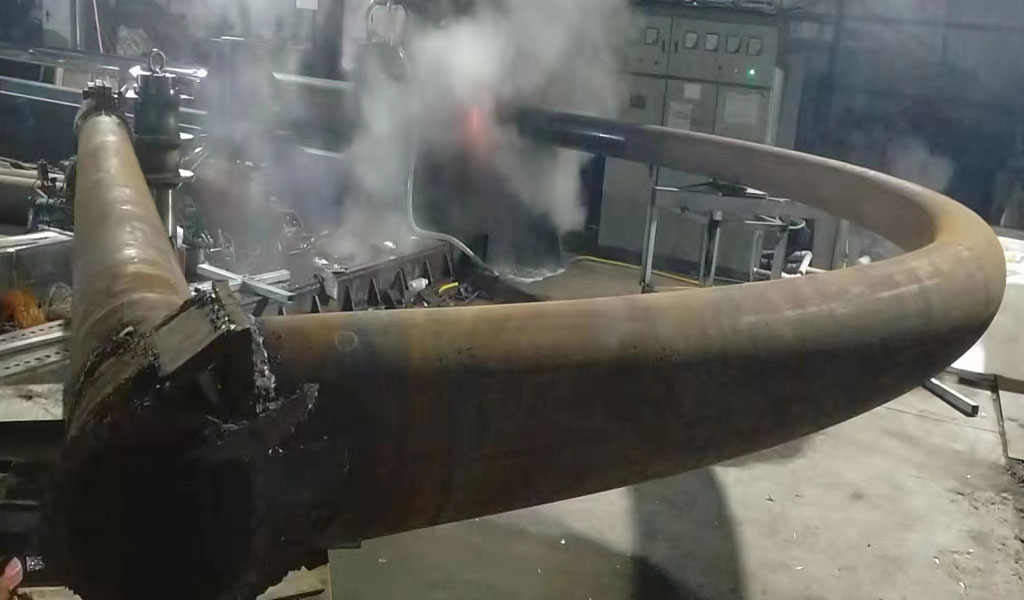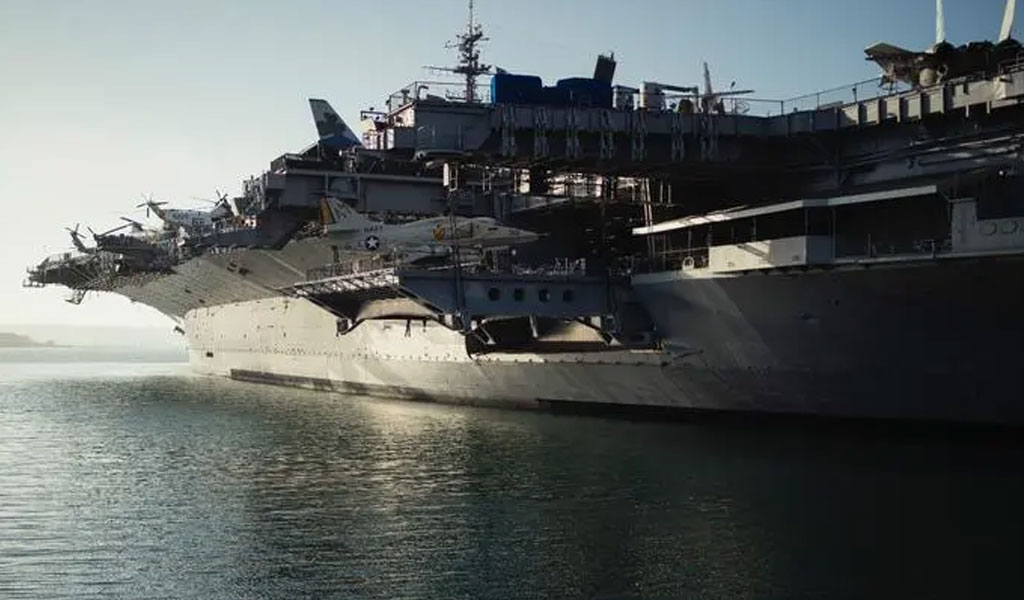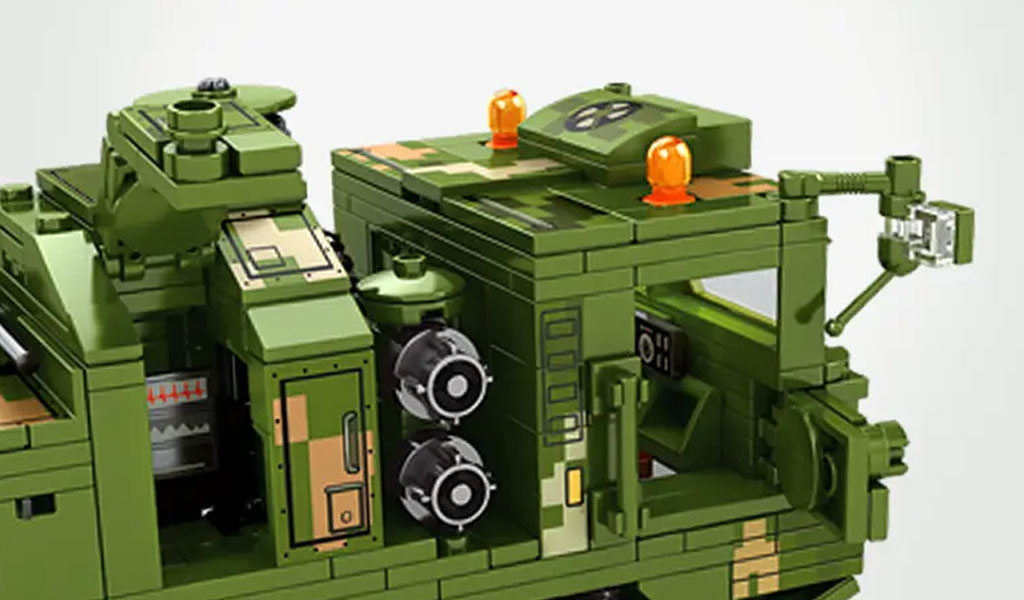In the realm of modern warfare, precision is key. From the development of advanced weaponry to the maintenance of military equipment, precision machining plays a vital role in ensuring the effectiveness and efficiency of the armed forces. One of the most significant advancements in this field is the use of Computer Numerical Control (CNC) machining. This article delves deep into the world of military CNC machining, exploring its history, applications, benefits, challenges, and future prospects, aiming to provide a comprehensive understanding of its pivotal role in modern military operations.

Chapter 1: A Brief History of CNC Machining in the Military
The journey of Computer Numerical Control (CNC) machining in the military begins with the development of machining tools and automation in the late 18th and early 19th centuries. The Industrial Revolution marked a significant turning point, with the invention of various machine tools and manufacturing processes. Early inventions like the lathe, milling machine, and the concept of interchangeable parts laid the foundation for modern machining techniques.
1.Early Machine Tools
The earliest machine tools, such as the lathe and the milling machine, were manually operated by skilled craftsmen. These machines allowed for more precise and efficient production of parts compared to traditional handcrafting methods. However, they still required a high degree of human intervention and expertise.
2.Industrial Revolution Advancements
The Industrial Revolution brought about significant advancements in machining technology. Eli Whitney’s introduction of standardized interchangeable parts for firearms manufacturing in the early 19th century revolutionized production methods. This breakthrough reduced the complexity of firearm assembly and maintenance and marked a crucial step toward CNC machining.
Early Adoption in the Military
The military has always been at the forefront of technological innovation, recognizing the importance of precision in weaponry and equipment. CNC machining found its initial application in the military in the early 20th century, albeit in a limited capacity.
The concept of Numerical Control (NC), the predecessor to CNC, emerged in the 1940s. The military played a pivotal role in its development. During this time, engineers and scientists began to experiment with ways to automate machine tools using punched paper tapes to control the machining process. This innovation aimed to reduce human error and increase precision.
CNC Machining in World War II
World War II was a turning point in the history of CNC machining. The demands of the war effort necessitated the production of vast quantities of weapons, aircraft, and other military equipment with unprecedented precision and speed.
1.The Birth of CNC
In the early 1940s, John Parsons, an engineer, and Frank Stulen, a machinist, developed the first true CNC machine tool at the Massachusetts Institute of Technology (MIT). This groundbreaking invention used punched cards to control the movements of a machine tool, paving the way for fully automated machining processes.
2.Military Applications
The military quickly recognized the potential of CNC machining for its operations. CNC machines were employed to produce critical components for weapons, aircraft, and vehicles. The newfound ability to consistently manufacture intricate and precise parts had a profound impact on the outcome of the war.

The Evolution of CNC Technology in the Post-War Era
The end of World War II marked the beginning of a period of rapid advancement in CNC technology. Military research and development efforts continued to drive innovation in the field.
1.Transition to Electronic Controls
In the post-war era, CNC machining evolved from using punched cards to electronic controls. The development of computer technology in the 1950s and 1960s facilitated the transition to digital control systems, making CNC machines more versatile and efficient.
2.Expansion into Civilian Industries
As CNC technology matured, it gradually made its way into civilian industries such as aerospace, automotive, and manufacturing. The lessons learned from military applications played a crucial role in shaping the civilian CNC machining landscape.
3.Miniaturization and Precision
Advancements in microelectronics and computer technology allowed CNC machines to become smaller, more precise, and capable of handling increasingly complex tasks. These developments had significant implications for military applications, especially in the production of miniaturized electronic components for guidance systems and communication devices.
In conclusion, the history of CNC machining in the military is a tale of innovation driven by the need for precision and efficiency in wartime production. From its humble origins in manual machine tools to the pivotal role it played in World War II and subsequent advancements in the post-war era, CNC machining has continued to evolve, making it a cornerstone of modern military technology and manufacturing.

Chapter 2: CNC Machining Applications in the Military
The application of Computer Numerical Control (CNC) machining in the manufacturing of military weapons has been a game-changer for the defense industry.
The ability to produce highly precise components has revolutionized the design, production, and performance of various weapons systems.
1.Firearms and Ammunition
Firearms, from handguns to assault rifles, require components with tight tolerances to ensure accuracy, reliability, and safety. CNC machining is crucial in crafting barrels, receivers, triggers, and other critical firearm components. The consistent quality and precision of CNC-manufactured parts contribute to the overall effectiveness of military small arms.
2.Precision-guided Munitions
The development of precision-guided munitions (PGMs) has transformed modern warfare. CNC machining plays a vital role in manufacturing the guidance systems, fins, and warhead components of missiles and smart bombs. These precision components enable PGMs to hit their targets with remarkable accuracy, minimizing collateral damage and maximizing the effectiveness of military strikes.
Aircraft and Aerospace Components
Military aircraft, from fighter jets to transport planes, demand extreme precision and reliability. CNC machining is extensively used in the production of critical aerospace components.(Related Service: CNC Machining Aerospace Parts In China)
1.Engine Components
Jet engines are complex and require precision machining for turbine blades, combustion chambers, and other parts. The aerospace industry relies on CNC technology to ensure the highest performance and safety standards for military aircraft.
2.Structural Components
CNC machining also contributes to the production of structural components like wings, fuselages, and landing gear. These components must withstand extreme forces and environmental conditions, making precision machining indispensable.
Naval Vessels and Submarines
The construction and maintenance of naval vessels and submarines demand components that can withstand the corrosive effects of saltwater and operate flawlessly in challenging underwater environments. (Related Service: Marine CNC Machining In China)
1.Propulsion Systems
CNC machining is employed to produce high-efficiency propellers and other critical parts of naval propulsion systems. The precision of these components is essential for the speed, maneuverability, and stealth of submarines and warships.
2.Sonar and Communication Systems
Submarines rely on advanced sonar and communication systems for navigation and defense. CNC machining helps create intricate sonar arrays, antennas, and communication equipment, ensuring the submarines’ capabilities remain at the cutting edge.
Armored Vehicles and Tanks
CNC machining has revolutionized the production of armored vehicles and tanks, making them more robust, agile, and survivable in modern combat scenarios. (Related Service: Military Sheet Metal Fabrication In China)
1.Armor Components
The production of armored plates and components relies on CNC machining for precision and consistency. These components protect military personnel and equipment from ballistic threats and explosive devices.
2.Turret Systems
Tanks and armored vehicles require highly precise turret systems for aiming and firing. CNC machining ensures the accuracy and reliability of these systems, enhancing the vehicles’ combat effectiveness.
Soldier Gear and Equipment
The equipment worn and carried by military personnel has evolved significantly with the help of CNC machining.
1.Body Armor
CNC machining is instrumental in crafting lightweight yet highly protective body armor. Modern body armor can withstand bullets and shrapnel while remaining comfortable for soldiers in the field.
2.Night Vision Devices
Precision machining contributes to the production of night vision goggles and scopes, granting soldiers the ability to operate effectively in low-light and nighttime conditions.
Field Repairs and Maintenance
CNC machining is not only used in the initial production of military equipment but also for on-site repairs and maintenance.
1.Replacement Parts
In the field, CNC machines can produce replacement parts quickly, reducing downtime and ensuring that military equipment remains operational even in remote or combat environments.
2.Maintenance Tooling
Customized tooling and fixtures produced through CNC machining aid military maintenance crews in performing complex repairs and inspections with precision.
CNC machining plays an indispensable role in various aspects of military operations, from the manufacturing of weapons and equipment to the maintenance of critical assets. The precision, reliability, and versatility of CNC technology have significantly enhanced the capabilities of armed forces worldwide, contributing to their effectiveness on the battlefield.
Chapter 3: The Advantages of CNC Machining in Military Applications
Computer Numerical Control (CNC) machining has become an indispensable tool in military applications due to a range of distinct advantages it offers. This chapter explores these advantages in detail.
Unparalleled Precision
Precision is a fundamental requirement in the military, especially when it comes to manufacturing weapons, equipment, and components. CNC machining delivers unrivaled levels of precision, ensuring that military hardware operates as intended.
1.Sub-micron Tolerances
CNC machines can achieve tolerances measured in microns or even sub-microns, ensuring that critical components fit together perfectly and function flawlessly. This level of precision is essential for components like firearm barrels and missile guidance systems.
2.Consistency
CNC machines consistently produce parts with identical dimensions, eliminating variations that can lead to malfunctions or reduced accuracy in military equipment.

High Production Efficiency
Efficiency is a key factor in military operations, and CNC machining excels in this regard.
1.Speed
CNC machines operate at high speeds, allowing for rapid production of components. This is crucial in times of conflict when there is a need for a quick turnaround in manufacturing.
2.24/7 Operation
CNC machines can operate continuously, day and night, without fatigue, ensuring a continuous supply of critical components and equipment.
Versatility and Complexity
CNC machining is incredibly versatile and can handle complex geometries that are otherwise difficult or impossible to achieve with conventional machining methods.
1.Complex Shapes
CNC machines can produce components with intricate shapes, such as turbine blades for aircraft engines or specialized parts for guided missiles.
2.Multi-axis Machining
Many CNC machines offer multi-axis machining capabilities, enabling the simultaneous machining of multiple surfaces and angles, reducing the need for secondary operations.
Cost-Effective Production
While CNC machines represent a significant upfront investment, they often result in cost savings over the long term.
1.Reduced Material Waste
CNC machining is highly efficient, minimizing material waste. This is particularly important when working with expensive or rare materials commonly used in military applications.
2.Lower Labor Costs
Once programmed, CNC machines require minimal human intervention, reducing labor costs associated with skilled machinists.
3.Consistent Quality
The elimination of human error and the consistency of CNC machining result in fewer defective parts and rework, ultimately saving costs.
Reduced Human Error
Human error can have disastrous consequences in military applications. CNC machining reduces the risk of errors associated with manual machining processes.
1.Elimination of Manual Handling
CNC machines do not require manual adjustment or handling of tools, reducing the chances of mistakes.
2.Precision in Repetition
CNC programs can be replicated with precision, ensuring that each component produced is identical to the last, eliminating variations caused by human inconsistency.
Improved Safety for Military Personnel
Safety is paramount in military operations, and CNC machining contributes to the well-being of military personnel in several ways.
1.Reduced Exposure to Hazardous Environments
CNC machining allows for the production of critical components in controlled environments, reducing the exposure of military personnel to hazardous conditions.
2.Reliable Equipment
The precision and quality assurance provided by CNC machining result in more reliable and safe military equipment, reducing the risk of accidents.
CNC machining offers a multitude of advantages in military applications, ranging from unparalleled precision and high production efficiency to cost-effective production and improved safety for military personnel. These advantages have made CNC machining an essential tool for the defense industry, ensuring that military equipment and components consistently meet the demanding standards required in modern warfare.
Chapter 4: Challenges and Limitations of CNC Machining in Military Contexts
While Computer Numerical Control (CNC) machining offers numerous advantages in military applications, it is not without its challenges and limitations. This chapter explores these issues in depth.
Security Concerns
1.Intellectual Property and Cybersecurity
As CNC machining relies heavily on digital data and software, there is a risk of intellectual property theft and cyberattacks. Hostile actors may attempt to compromise CNC programs, steal designs, or introduce malware, potentially compromising the security of military systems.
2.Export Control
The export of CNC machines and related technologies is often subject to strict regulations to prevent them from falling into the wrong hands. Ensuring compliance with export controls while still meeting military demand can be a delicate balancing act.
Maintenance and Reliability
1.Machine Downtime
CNC machines, like all mechanical systems, require maintenance and can experience downtime. This can disrupt production schedules, especially in critical military operations.
2.Parts Availability
Maintaining a ready supply of spare parts for CNC machines can be challenging, especially in remote or deployed military environments. The unavailability of critical components can lead to extended downtimes.
Adaptability to Changing Technologies
1.Rapid Technological Advancements
The pace of technological change in both CNC machining and military hardware is relentless. Keeping CNC systems up to date with the latest software, hardware, and tooling can be costly and time-consuming.
2.Compatibility Issues
Compatibility between legacy CNC machines and newer technologies can pose integration challenges. It may be necessary to upgrade or replace older machines to maintain compatibility with evolving military systems.
Skilled Labor Requirements

1.Training and Expertise
CNC machining requires operators and technicians with specialized training and expertise. Finding and retaining skilled personnel can be difficult, especially in competitive job markets.
2.Dependency on Skilled Workforce
The military’s reliance on skilled CNC operators creates a potential vulnerability if a significant portion of the workforce becomes unavailable due to illness, injury, or attrition.
Supply Chain Vulnerabilities
1.Single-source Dependencies
Reliance on a single supplier or limited sources for critical CNC machine components can create vulnerabilities in the supply chain. Disruptions in the supply chain can impact military production schedules.
2.Geopolitical Factors
Global political tensions and trade disputes can affect the availability of materials and components necessary for CNC machining. This can lead to delays and increased costs in military production.
Environmental Considerations
1.Waste and Sustainability
CNC machining generates waste in the form of metal shavings, coolants, and cutting fluids. Proper disposal and management of these byproducts are essential to minimize the environmental impact.
2.Energy Consumption
CNC machines consume significant amounts of energy, which can be a concern in terms of both cost and environmental impact. Energy-efficient practices and technologies are important for mitigating this issue.
CNC machining, while offering numerous advantages in military applications, also presents several challenges and limitations. These include security concerns related to cyber threats and export controls, maintenance and reliability issues, the need to adapt to rapidly changing technologies, a demand for skilled labor, supply chain vulnerabilities, and environmental considerations. Addressing these challenges is essential to ensure the continued effectiveness and reliability of CNC machining in military contexts.
Chapter 5: Innovations in CNC Machining for Military Use
The field of Computer Numerical Control (CNC) machining is continually evolving, and several innovative advancements have emerged that hold great promise for military applications. This chapter explores these innovations in detail.
Miniaturization and Micro-Machining
1.Nanoscale Precision
One of the most significant innovations in CNC machining for the military is the ability to achieve nanoscale precision. This is critical for producing tiny components used in guidance systems, sensors, and communication devices.
2.Micro-electromechanical Systems (MEMS)
CNC machines are now capable of producing Micro-electromechanical Systems (MEMS), which are tiny mechanical and electronic devices used in military applications such as drones, navigation systems, and micro-robots.
Additive Manufacturing (3D Printing)
1.Rapid Prototyping
Additive manufacturing, often referred to as 3D printing, has revolutionized the design and production of military components. It allows for rapid prototyping, enabling the quick iteration and testing of new ideas and designs.
2.Complex Geometries
3D printing can produce complex, lattice-like structures and intricate geometries that are challenging or impossible to achieve with traditional machining methods. This is valuable in designing lightweight yet strong military components.
Hybrid CNC Systems
1.Combining Technologies
Hybrid CNC systems integrate additive manufacturing (3D printing) with subtractive manufacturing (traditional CNC machining). This approach allows for the creation of components with both intricate geometries and high precision.
2.Improved Material Utilization
Hybrid systems optimize material utilization by layering additive manufacturing with precision CNC machining, reducing waste while maintaining the required tolerances.
Automation and Artificial Intelligence Integration
1.Lights-out Manufacturing
Automation has made it possible to operate CNC machines without human intervention, a concept known as “lights-out manufacturing.” In military contexts, this ensures uninterrupted production even in high-security or remote environments.
2.AI-Enhanced Operations
Artificial intelligence (AI) is being integrated into CNC machining to optimize tool paths, reduce cycle times, and enhance quality control. AI can also be used for predictive maintenance, minimizing machine downtime.
Materials Advancements
1.Advanced Alloys
Materials used in military applications have seen significant advancements. CNC machining can now handle advanced alloys, composites, and ceramics, which are essential for components requiring high strength and durability.
2.Stealth Materials
Materials that absorb or deflect radar signals (stealth materials) can be challenging to machine due to their unique properties. Innovations in tooling and machining techniques enable the precise shaping of stealth materials for military purposes.
Enhanced Tooling and Software
1.High-Speed Machining
New tooling technologies allow for high-speed machining, reducing cycle times and enhancing production efficiency without compromising quality.
2.Simulation Software
Advanced simulation software assists in optimizing CNC machining processes by predicting potential issues and ensuring the correct toolpaths, reducing scrap and rework.
Innovations in CNC machining for military use are advancing at a rapid pace, enabling greater precision, versatility, and efficiency in the production of military components and equipment. These innovations, from miniaturization and 3D printing to hybrid systems and AI integration, are reshaping the landscape of military manufacturing, enhancing the capabilities of armed forces, and driving the development of cutting-edge military technology.
Chapter 6: Case Studies: Real-World Examples of Military CNC Machining
This chapter delves into real-world case studies that highlight the crucial role of Computer Numerical Control (CNC) machining in various military applications.
The F-35 Lightning II Program
The F-35 Lightning II program represents one of the most advanced and complex military aircraft projects globally, involving three variants: the F-35A (conventional takeoff and landing), F-35B (short takeoff and vertical landing), and F-35C (carrier-based). CNC machining plays a pivotal role in manufacturing precision components for these aircraft.
1.CNC Machining in Airframe Production
- Complex Components: The F-35’s airframe contains numerous complex components, such as structural elements and aerodynamic surfaces, all requiring high precision. CNC machining ensures the accurate fabrication of these parts, allowing them to fit together seamlessly.
- Lightweight Materials: The aircraft’s extensive use of lightweight materials, including composites and advanced alloys, demands CNC machining expertise to maintain structural integrity while reducing weight.
2.Engine Components
- Turbine Blades: The F-35’s powerful engines rely on CNC-machined turbine blades for optimal performance. These blades must withstand extreme temperatures and pressures, requiring precision manufacturing to ensure reliability.
- Exhaust Nozzles: CNC machining is essential in crafting exhaust nozzles that enable the F-35B variant’s vertical landing capability. The intricate geometry of these nozzles demands precision machining.
Precision Munition Manufacturing
The production of precision-guided munitions (PGMs), such as guided missiles and smart bombs, exemplifies the importance of CNC machining in military applications.Missile Guidance Systems:
- Miniaturization: Miniaturized guidance systems rely on CNC machining to create tiny, complex components, ensuring that missiles can accurately home in on targets.
- Reduced Collateral Damage: The precision of CNC-machined components in PGMs minimizes collateral damage, making these munitions more effective and less likely to harm non-combatants.
Submarine Propulsion Systems
Submarines are highly sophisticated vessels, and their propulsion systems are a testament to the precision required in military CNC machining.Propellers
- Hydrodynamic Efficiency: CNC machining is crucial in crafting propellers with the utmost hydrodynamic efficiency. This enhances the submarine’s speed and maneuverability, critical for both military and stealth considerations.
- Silent Running: Precision machining ensures that propellers are balanced and smooth, minimizing noise, a key factor in submarine stealth.
Soldier Equipment Customization
CNC machining is not limited to large-scale military projects; it also plays a role in enhancing the personalization and functionality of soldier equipment.Body Armor Plates:
- Customization: Large CNC machining allows for the customization of body armor plates, ensuring a better fit for individual soldiers and reducing the risk of injury.
- Weight Optimization: Precision machining helps create lighter, yet equally protective, body armor plates, improving the mobility and comfort of soldiers in the field.
Armored Vehicle Production
Armored vehicles, such as tanks and personnel carriers, rely on CNC machining for critical components.Turret Systems:
- Accuracy in Firing: The turrets of armored vehicles house powerful weaponry, and CNC machining ensures that the aiming and firing systems function with pinpoint accuracy.
- Survivability: CNC-machined armor components provide the necessary protection against ballistic threats and explosive devices, enhancing the survivability of military personnel.
These case studies illustrate the indispensable role of CNC machining in various military applications. From the precision required in aircraft manufacturing and munition production to the stealth and reliability considerations in submarine propulsion systems and the customization of soldier equipment, CNC machining contributes significantly to the effectiveness and safety of armed forces worldwide. These real-world examples underscore the critical importance of CNC machining in modern military operations and technology.
Chapter 7: In Conclusion
As we conclude our exploration of military CNC machining, it becomes clear that this technology has become an indispensable cornerstone of modern military operations. This final chapter underscores the critical themes that have emerged throughout this article.
The Inextricable Link Between Precision and Military Success
Precision, both in terms of the production of military hardware and the execution of military operations, lies at the heart of military success. CNC machining has played a pivotal role in achieving this precision, whether it’s crafting the intricate components of advanced weaponry, creating aerodynamically optimized aircraft, or maintaining the structural integrity of naval vessels. The connection between precision and military effectiveness cannot be overstated, and CNC machining stands as a testament to humanity’s ability to harness technology for national security.

The Ongoing Evolution of CNC Machining in the Military
CNC machining has not remained static but has continuously evolved to meet the ever-changing demands of the military. From its origins in the early 20th century to the rapid advancements in AI, materials science, and sustainability, CNC machining has adapted to stay on the cutting edge of military technology. Case studies have showcased its contributions to projects like the F-35 Lightning II program, precision munition manufacturing, submarine propulsion systems, soldier equipment customization, and armored vehicle production, underscoring its critical role in military innovation.
The Road Ahead: Challenges, Opportunities, and Responsibility
The path forward for military CNC machining is filled with both challenges and opportunities. Integrating AI and machine learning, adopting AR and VR for training and support, addressing environmental concerns, and ensuring cybersecurity are exciting prospects. Collaboration among nations and industries promises to drive further progress, yet it also raises questions about export controls and ethical considerations, particularly with the potential development of autonomous weapons.
As we look to the future, it is essential to recognize the responsibility that accompanies the continued evolution of military CNC machining. Maintaining security and protecting sensitive data must remain paramount, even as we strive for greater precision, efficiency, and sustainability. Policymakers, military leaders, and technologists alike must work together to navigate the complex ethical, environmental, and geopolitical challenges that lie ahead.
In closing, military CNC machining stands as a testament to human ingenuity, innovation, and adaptability in the pursuit of national security. Its role in the defense industry is foundational, and its evolution will continue to shape the military landscape in the years to come. As we venture into an era of unprecedented technological advancement, the responsible and ethical use of CNC machining in military applications will be vital to ensuring a safer and more secure world.
